
In the 2012 James Bond movie Skyfall, 007 (Daniel Craig) is quizzed by the villain Silva (Javier Bardem) as to his "hobby". Bond's reply is terse and economical: "Resurrection."
It's a mantra for the James Bond franchise as a whole, one that has endured and survived for nearly six decades since its inception with 1962's Dr. No. Sean Connery was the first actor to put his stamp on the character originally created by Ian Fleming, and many would contend that his suave urbanity remains the definitive take. However, one of the key tenets of the Bond franchise has been its adaptability, which is borne out through all the other actors that have played 007.
George Lazenby gave it a single shot with 1969's On Her Majesty's Secret Service, before the lighthearted Roger Moore took over with 1973's Live and Let Die, a position he held until 1985's A View To a Kill. Timothy Dalton, ruthless and single-minded as 007, made just two movies, 1987's The Living Daylights and 1989's Licence to Kill, before Pierce Brosnan, slickly efficient if somewhat lacking in substance, took over with 1995's GoldenEye.
Following the critical (although not commercial) disaster of 2002's Die Another Day, Brosnan's final movie, it was clearly time for a rethink. Bond was then reborn via the power of Daniel Craig's performance in 2006's Casino Royale, an entry that was critically praised for restoring grace notes of empathy and vulnerability to 007. Craig's portrayal is another microcosm of the mutability of the Bond franchise, its ability to respond to current trends and absorb new aesthetics in the process.
The 25th Bond movie, No Time To Die, is set to be Craig's last and has to shoulder the considerable weight of expectation. Both Casino Royale and Skyfall were praised as stylishly resonant and engrossingly human Bond blockbusters, even if the even-numbered movies, Quantum of Solace (2008) and Spectre (2015), fell somewhat short of the mark.
No Time To Die producer Michael G. Wilson has been with the Bond series since the 1970s, becoming prominent for the first time as a screenwriter on 1979's Moonraker. Along with Barbara Broccoli, daughter of the legendary Bond franchise creator Albert R. 'Cubby' Broccoli, Wilson is one of the two main gatekeepers of the series, a pivotal figure in determining the stylistic approach of each given Bond era. Speaking with Cineworld, he says that the mutability of 007 has been key to the character's ongoing relevance.
"He's always been a contemporary character," Wilson explains. "That's one of the elements that has accounted for the longevity. The opportunity to recast has been a boon for both the public and the series because every actor who has come into it has brought something new to the character. It's kept the character fresh. New directors come in and work with the team that we have established. Of course, Ian Fleming wrote a very complex and interesting character, and all of the actors and directors have gone back to the Fleming books whenever they get stuck for an idea. All of those elements."
"The films reflect the times they're in," adds Barbara Broccoli. "They're so interesting. You go back and you look at some of the older films and it gives you a sense of what the culture was like at the time."
"Every Bond actor has brought something new to the character" – Michael G. Wilson
At the outset of No Time To Die, and in the wake of the events of Spectre, Bond has retired from active duty in MI6 and is enjoying a quiet life with Madeleine Swann (Lea Seydoux). However, a deadly secret from her past manifests in the form of the evil Safin (Rami Malek), a maniac possessing all the world-threatening plans we expect from a Bond baddie.
007 must strap on his holster again and engage with this new threat, all the while coming to terms with a world that has changed around him. Upon returning to MI6, he discovers that new '00' agent Nomi (Lashana Lynch) is more than ready to challenge his supremacy while out in the field, operative Paloma (Ana De Armas) continues to even out the score.
Once again, it speaks of a franchise responding to ripples in the water. The presence of Fleabag creator Phoebe Waller-Bridge as co-writer is, perhaps, an indicator of greater agency within the female characters, something the Bond films have historically struggled with. Behind the camera is Cary Joji Fukunaga, a filmmaker who has generated acclaim for sensitive, character-driven dramas such as Jane Eyre (2011) and Beasts of No Nation (2015).
"From early meetings with Daniel, Barbara, Michael and the stunt teams, we were trying to figure out how a sense of character would always be driving the action forward," explains Fukunaga. "From the very first action sequence, it's not just a case of getting from point A to point B to escape the baddies. There are other layers that are playing out at the same time. I think that principle applies to all the action sequences in the film. There are emotional, as well as physical, stakes for the character.
"I don't know necessarily if it's the Bond character that requires such a specific dogma within the action sequences. But it definitely helped to have Daniel portraying Bond because, from his very first outing in Casino Royale, he brought a rawness and vulnerability to the character. That allowed for the emotional layers to be put in."
For all of No Time To Die's innovations, it's duty-bound to honour James Bond conventions. The locations are exotic, the sense of scale is expansive and the action sequences are logistically massive, showcasing all the car chases, gunfights and gadgets that we've come to expect from 50 years of Bond history. The technicians involved include La La Land cinematographer Linus Sandgren, composer Hans Zimmer (The Dark Knight), who collaborates with singer Billie Eilish on the title track, and production designer Mark Tildesley (Phantom Thread).
It's a highly accomplished team, the sort that only a mega-budget Bond movie could command. (Priced between $250 and $300 million, it's one of the most expensive films in the series.) No Time To Die is also the first Bond movie to shoot on film (as opposed to digital) with IMAX 70mm cameras, which promises to lend further expanse and tactile immersion to 007's latest adventure.
"I've always wanted to shoot on IMAX," says Fukunaga. "At first, it started off as a bluff. Linus Sandgren and I really wanted to shoot on film. Skyfall was shot digitally by Roger Deakins. Hoyte van Hoytema shot on film on Spectre. And we wanted to get back to film again on No Time To Die.
"Sometimes, one is like, 'Well, ideally, we'd love to shoot in IMAX, so 35mm sounds like a reasonable ask.' And then they said yes to IMAX. Once we started talking to them, we started getting excited about the potential of shooting on the film cameras, because some IMAX movies are shot digitally. Seeing that 70mm negative, or just the prints, being projected onto a big screen, makes one aware of the difference between a 35mm print and 70mm print. Visually speaking, it was one of those moments where you had to be there at the time.
"In terms of practical application, they're massive cameras. By the end of the shoot, we were hand-holding the cameras and moving them around with these massive mags. It's like any other format: once you start shooting with it, it looks a lot cooler."
After 18 months of pandemic-related woes, there's clearly a pent-up desire to celebrate this enduring British institution. It's sobering to think that the Bond franchise is the last bastion of UK film franchises (one might be able to argue the case for the Harry Potter spin-off series Fantastic Beasts). For that reason, the series is freighted with all manner of nostalgic memories and cultural significance, something that becomes poignant when one considers that this is Craig's last shot at the character.
A controversial choice when appointed to the role in 2005, Craig had to weather an onslaught of press attention. The focus on his blonde hair was a nitpick elevated to a national grievance (Bond is traditionally saturnine and dark, as per Fleming's description) while disgruntled fans hosted their ire on the website danielcraigisnotbond.com (which, amazingly, is still running). However, Craig survived the storm to fashion a bold new iteration of 007, and Barbara Broccoli says this has endured for a very simple reason.
"When we went to cast him, we were looking for a 21st-century Bond," says Barbara Broccoli. "He's more than delivered on that basis. He's brought a lot of humanity to the role. He's allowed the character to bleed and allowed us to see the emotional pain he's in, to explore the conflicts and complexities. He's been an incredible Bond for our time."
Broccoli says there was moving poetry to Craig's final day on the set, and, by extension, to his final day as James Bond. She describes the moment as "truly devastating", adding: "It turned out, although not by design, that the final scene he shot was Bond running away into the darkness. It just seemed so appropriate, and eerie, actually."
"Daniel Craig has allowed James Bond to bleed" – Barbara Broccoli
"It was very difficult and very sad because he's been such a tremendous Bond," Broccoli continues. "He's given it his all. We were night-shooting on the backlot at Pinewood, so we had our crew, but also a lot of the people who would ordinarily be working the daytime shifts stayed around. We wrapped around one or two in the morning and lots of people stayed around to acknowledge and celebrate Daniel. He's been a fantastic team member but also the leader of the company. People really wanted to show their appreciation for him, not just as an actor but as a crewmember, as someone they've been standing alongside for 15 years."
Whatever one's thoughts are in relation to Daniel Craig's portrayal of 007, there's no denying he triumphed in the manner of his predecessors. He took an archetypal character and re-authored it, largely stripping 007 of his more troubling qualities and substituting them with profound, relatable nuances of human weakness. His Bond is a killer and a professional, and perhaps more in line with Fleming's original creation.
"I've always wanted to shoot in IMAX" – Cary Fukunaga
Like Timothy Dalton before him, Craig's Bond bears the scars of his various conflicts, both inside and outside, but the performance remains knowingly self-aware. Craig is acutely conscious that he operates within an outsized franchise where no suit is too stylish, no martini too dry. His Bond is tough yet likeable, driven yet dryly humorous, by turns dapper and down and dirty, vulnerable and invulnerable. Craig invests us in a fantasy that has been running for nearly six decades, and he throws down the gauntlet to the next incumbent of James Bond's tux.
"Bond is one of the most enduring cinematic figures," Fukunaga muses. "Doctor No came out almost exactly 60 years ago. There's a tradition of Bond being a cinema experience, whether it's fathers and sons, entire families going out together and so forth. That tradition continues to this day. The marquee moments, the suaveness, where Bond will, for instance, walk away from a fight or an explosion while fixing his cuffs, are so recognisable to an audience. It's always fun to see on that big screen. Anything can be watched on your iPhone these days but it's the magic of going to the movie theatre and seeing that larger-than-life character, which results in a larger-than-life experience."
Click here to book your tickets for No Time To Die, released in Cineworld cinemas on 30th September.
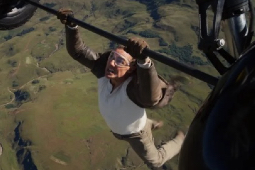
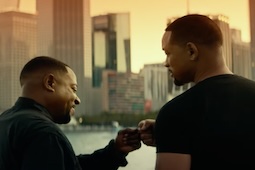
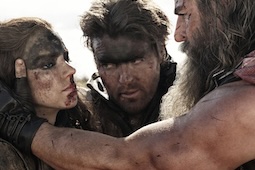

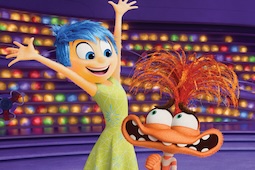
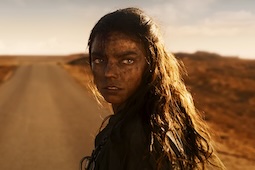
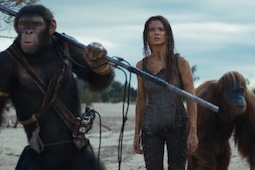
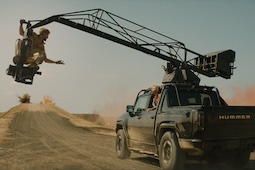
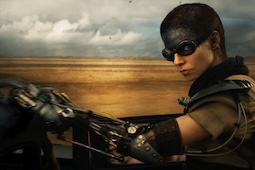
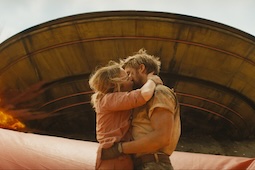
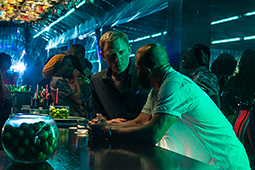



.jpg)
.png)



